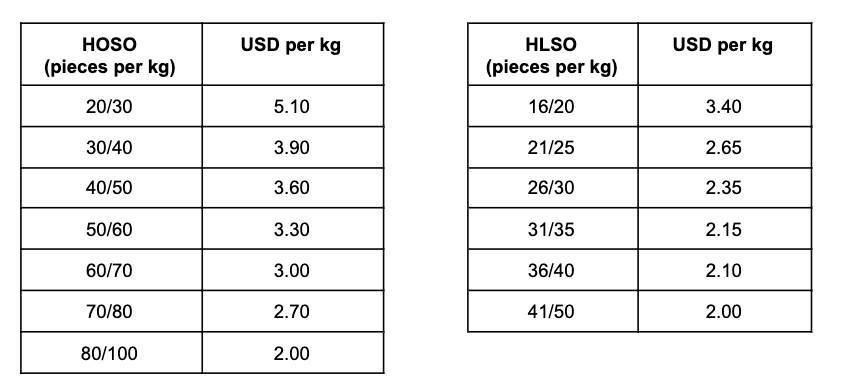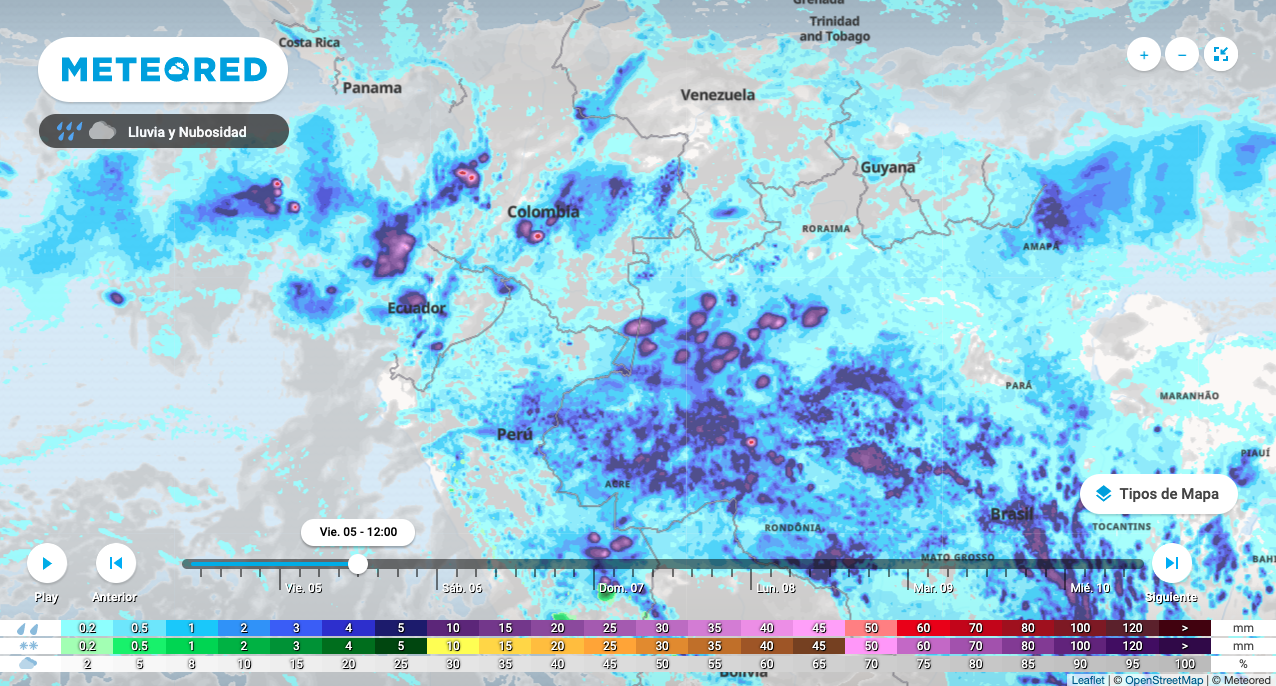Farmgate Ecuadorian shrimp prices of early February and update on the sector
Current Farmgate prices
According to Tridge’s Regional Manager in Ecuador, Pedro Angel, the government of Ecuador has announced an increase in the price of diesel of USD 0.05 per gallon until February 10th. More than 65% of the shrimp farms use diesel as the main input for their water pumps and production processes. Transport services have also risen, and the whole shrimp's supply chain at origin has suffered a slight cost increase due to this disposition. Also according to Angel, Farmgate prices at February 4th were as follows:
Farmgate prices for shrimp in Ecuador, Feb. 4th, 2021

Source: Tridge
After the low prices observed in Q4Y20, it is possible to see an improvement in the farmgate prices of Ecuadorian shrimp. There has been a 17% increase in the HOSO 50/60 pieces per kg from USD 2.80 in week 49 of 2020 to USD 3.30 in week 5 of 2021 as observed above. The increase is related to the reduced yield provoked by rains affecting harvest, and increased production costs.
White spot disease found in one of the biggest shrimp exporters
On January 25th, the Chinese Customs Department announced that one of the biggest Ecuadorian shrimp producers and exporters of shrimp had its shipments suspended as the white spot shrimp disease was detected in one of their latest shipments. This information has been confirmed by the Ecuadorian National Chamber of Aquaculture (CNA). The exporter is on the top five exporters of shrimps exporting 65.000 MT in 2020 which represents about 10% of the total exported volume of Ecuador in 2019.
Ecuadorian shrimps have been under scrutiny since 2019 when China and Ecuador have signed an agreement on testing each batch of shrimp for the presence of white spot disease before shipment. Then in July 2020, some major exporters had their shipments suspended when traces of COVID-19 were detected in their outer packages (read more on “Shrimp prices in China hit a record low in 8 years, but expects a slight recovery for the Chinese New Year”).
Reduced yield and postponed harvest
Ecuador coastline, where most of the shrimp farms are located, has two seasons the dry season between May and December and the rainy season from January to April. The off-season for the farmed shrimp is between March to June when the country is at the peak of the rainy season. This year, due to La Niña effects, the raining started earlier and has been affecting the shrimp farms. The amount of rain in the shrimp farms causes a cascade of problems, starting with the decrease in the pH of water, decrease in temperature, increased turbidity which causes a reduction in the penetration of sunlight.
These factors cause an abrupt fall in the photosynthetic populations, followed by an increase in heterotrophic bacterial activity that consumes the dissolved oxygen reducing its availability for the shrimp population, even creating anoxic water conditions. These environmental changes in the pond cause molting in shrimps, which are known to molt under stress. The softshell left on shrimps takes some days to harden, in which time they are more susceptible to diseases, cannibalism, elevating the mortality rate. According to Tridge’s Regional Manager in Ecuador, Pedro Angel, who has spoken to a producer of shrimps, reported that untimely molting caused by the rains are delaying harvest as shrimps must have an optimal skin texture and yield keep on decreasing.

Source: Metereored
Ecuador was the biggest producer of shrimp in 2020
2020 came was a very difficult year for all the seafood sector, with many logistics disruptions that affected the production and trade with lockdowns of main consumer countries due to the pandemic. The farmed shrimp industry had an estimated 13% decrease in production volume in 2020. The main decreases were in the Asian producers which reduced their production due to many disruptions in input and larvae. India which was the biggest producer so far had a YoY reduction of about 29% and China a reduction of 20%. Vietnam was an exception between the Asian producers and had an increase of 1% in volume, as it was successful in containing the spread of the COVID-19 in the country, minimizing the effects on labor and input shortages.
The overall reduction of production in Asia, allowed Ecuador to become the world leader in the production of cultivated shrimps as it was able to increase its production by 19% between 2019 and 2020 achieving more than 700 thousand MT, surpassing India’s production by 100 thousand MT. On the trade side, Ecuador faced many challenges in the exports to its main importer China, but the YoY decrease was kept at 6% in value for negotiations in USD achieving USD 1.88 billion and a 3% increase for negotiations in GBP achieving GBP 787.89 million in 2020. And the total export value was USD 3.61 billion and GBP 1.49 billion with a YoY variation of -1.1% and 7% respectively.

Source: CNA-Ecuador
Sources:
Translated from Spanish. Aquaculture Alliance Org. "Effects of rain in shrimp farms."
BioAqua. "How does rainfall affect shrimp pond water parameters?."
Intrafish. "Ecuadorian shrimp producer suspended from China after white spot discovered."
Meteored. Climate maps.
Translated from Spanish. Pesca con Ciencia. "Shrimp production heavily affected by COVID-19 in 2020 and Ecuador occupies the first position."
Polartic Seafood. "Ecuador's farm gate shrimp prices languish world lowest."
Roda Internacional. "Chinese customs suspends the import of vannamei from the Ecuadorian company Songa."
Shrimp Science. Molting and Common Problems.



